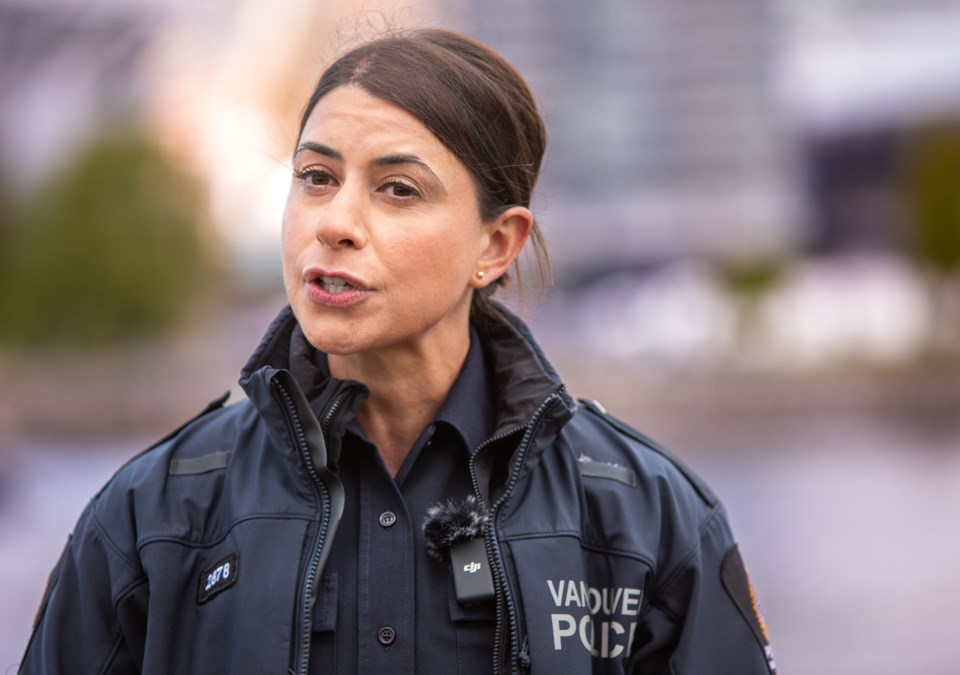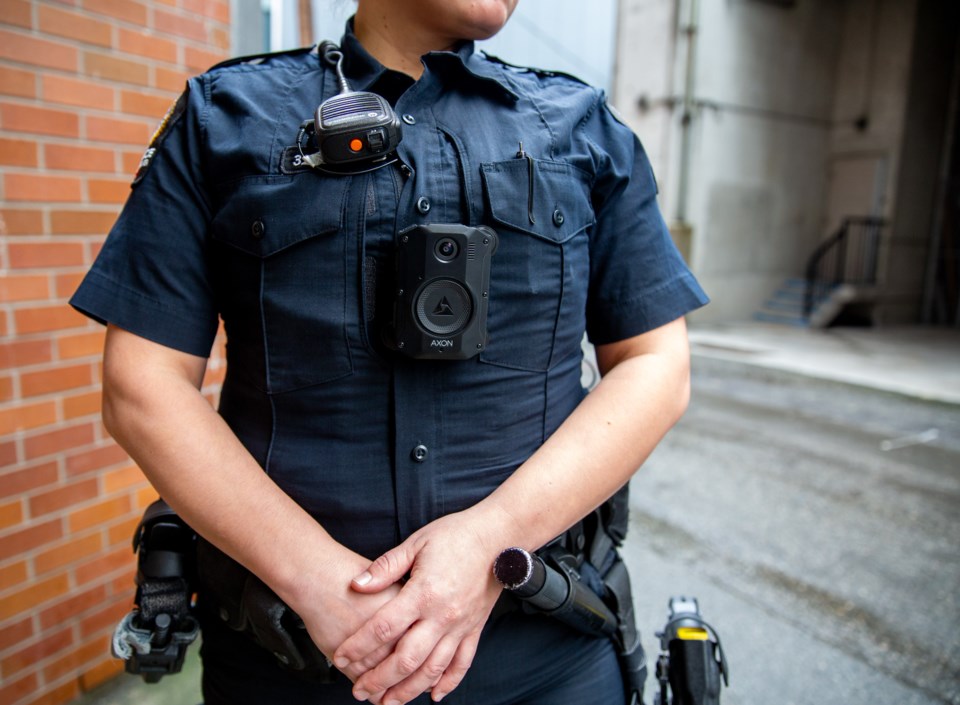The ย้ถนดซรฝำณปญPolice Department has decided to allow officers equipped with body worn cameras to continue wearing the devices beyond the originally planned six-month trial period.
The trial, which began in January and was supposed to conclude June 30, will now run until the end of 2024.
Const. Tania Visintin, a media relations officer, said in an email that the trial — which initially involved 85 officers when it launched in January — was extended to continue evaluating the use of the chest-mounted cameras.
“We are continuing to work with Crown counsel to streamline processes as well as continuing to work to determine the effect of [the cameras] when it comes to police complaints,” Visintin said.
The budget for the trial was $307,000. A breakdown of the costs over the first six months and whether the $307,000 would cover the remainder of the trial wasn’t available at deadline.
“It is important to maintain momentum for this within VPD and with the public, so we felt it was worth the cost and effort to continue the project beyond the pilot period,” she said. “It is on a volunteer basis so members can choose to continue to participate, or not.”
'Safe and practicable'
At the launch, the department said officers who volunteered to wear the chest-mounted cameras would be working in the downtown core, the east side of the city and in the traffic section.
Motorcycle officers were also to be outfitted with cameras on their helmets.
The VPD said at the time that officers were expected to activate their cameras as soon as “safe and practicable” for calls when there is “a reasonable belief that there will be use of force or where violent or aggressive behaviour is anticipated.”
Any officer who activated a camera was required to inform a person that they were being recorded “as soon as possible, unless doing so could jeopardize the safety of an officer or a member of the public.”

No cases to trial yet
“Members have reported that they feel there has been an increase in positive interactions with members of the public,” Visintin said. “Anecdotally, some members have stated they would never want to give their camera back.”
Whether camera footage has been integral to evidence in a court case, Visintin said the department has yet to have a case go to trial involving a body worn camera.
The department has long considered using the cameras, but cost has often been cited as a factor. Civil liberty and community groups have also raised questions about privacy concerns.
Myths and misinformation
But in the last budget go-round with city council, funds were approved for a trial. Mayor Ken Sim’s ABC ย้ถนดซรฝำณปญparty has pushed for the cameras since being elected in 2022, with Coun. Brian Montague a strong proponent.
Montague, a retired VPD officer, said at a council meeting in December 2022 that there were myths and misinformation circulating in the community about the cameras. He said they are “secure pieces of hardware” and officers don’t have the ability to alter or destroy footage.
“That's part of the problem here — people just aren't properly informed,” he said, adding that cameras wouldn’t be needed for every officer in the department.
Montague argued that cameras would reduce use-of-force incidents, assaults on police officers and increase public confidence. When he was a spokesperson for the VPD in 2016, he told Glacier Media it would cost an estimated $17.2 million to implement a camera program.
Costs have varied at other departments across Canada, depending on type of camera, number of cameras, how footage is stored and administrative costs.
The Delta Police Department, for example, said in 2022 that it cost $9,000 to implement a program and another $18,000 to buy 16 cameras and associated equipment.
In addressing privacy concerns, Montague said “people really have to understand that there is no expectation of privacy when you're in a public place. A police officer wearing a body worn camera doesn't change that.”
A ย้ถนดซรฝำณปญpolice report that went before the ย้ถนดซรฝำณปญPolice Board in 2013 pointed to several benefits of having police wear cameras, including increased transparency.
“When an incident occurs and the facts of the case are disputed by police officers and suspects, the camera provides another set of facts which may aid in determining what actually occurred,” the report said.
“However, it is important to note that the value of [body cameras] in many use-of-force situations is limited due to the fact that in the case of a struggle, the video will likely be obscured.”
'A full rollout' of officers
Council cannot mandate police officers to wear cameras. That is the jurisdiction of the police board. It was unclear at deadline whether the board was required to approve the extension of the trial.
A full evaluation report of the trial is expected to go before the police board.
“As part of our evaluation report, we will be calculating what a full rollout to frontline officers would cost,” Visintin added. “We do not have the cost estimate at this time.”
The VPD has a of frequently asked questions regarding the cameras.
In 2016, the Independent Investigations Office said in its annual report that it could have better resolved a significant number of cases in B.C., if officers were equipped with body cameras.
The report concluded that footage from cameras would have potentially assisted in 93 per cent of 71 investigations reviewed by the agency’s investigators.
Of the 71 cases reviewed, 49 involved general duty officers, 17 were related to dog handler teams and five concerned emergency response teams and the Combined Forces Special Enforcement Unit.



